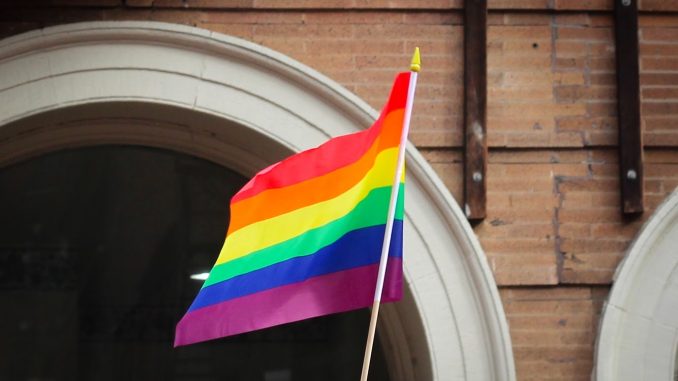
Ari Rubinson publicly came out as transgender two weeks ago, but the current political climate played a role in his choice not to do so sooner.
“The LGBTQ community felt a surge of feeling safe and feeling supported by their community a couple years ago,” said Rubinson, a junior nursing major. “Now, we’ve kind of swiped the switch completely and we’re scared and unsure of what the future really holds for us.”
President Donald Trump’s administration is considering a regulation to define gender as exclusively male or female, The New York Times reported last week. If adopted, the regulation would remove transgender and gender non-conforming citizens from Title IX anti-discrimination protections under federal law.
The proposal would roll back a 2015 regulation under the Affordable Care Act, which made it unlawful to discriminate on the basis of gender identity. It would also reverse course on the interpretation of long-standing anti-discrimination laws.
The LBGTQ community and its allies were outraged and hurt, taking to social media with the hashtag #WontBeErased. On Tuesday, hundreds of protesters turned out at Love Park to show their support for transgender people in the city.
Temple students in the transgender community said they were scared — but not surprised — by the news.
“We’re living under a government that, quite frankly, is not respecting people and their right to choose who they are and their right to express who they are,” Rubinson said.
Rubinson is getting top surgery in a few weeks to remove his chest, which is partially covered by his healthcare provider, United Health Care. He’s worried the surgery won’t be funded for transgender people who receive federal healthcare if President Trump’s proposal is adopted.
“At first I was really scared [and then] that fear turned into anger,” said Gared Harbison, a senior criminal justice major and the president of the student organization Students for Trans Awareness and Rights.
Tony Clark, a junior history major and the social media coordinator for Queer People of Color, said QPOC discussed the potential ramifications of the proposal on the transgender community at their general body meeting on Wednesday.
“We started off our semester with some light-hearted topics to get the semester into gear,” Clark said. “Now, with everything that’s charging politically, we will be talking more about how to protect ourselves and what to do if these legislations get passed.”
“We aren’t always going to be here… but future generations… we owe it to them to make our voices heard,” he added. “Yes, trans people are here, we exist, we have existed, we continue to exist.”
For Heath Fogg Davis, the director of the Gender, Sexuality, and Women’s Studies program and author of “Beyond Trans: Does Gender Matter,” it’s important to educate students on the governmental process needed to turn this regulation into a final rule.
He added the media’s sensationalization of this issue detracts from its explanation of the facts.
“The report in the New York Times, as the media does often, didn’t delve into the real details about what a memo like this really means [and] whether or not a rule like this can actually be adopted,” Davis said.
For a regulation to be approved, it must first be listed in the Federal Register and in the Agencies’ official docket on Regulations.gov, where it is then open to public comment and discussion. Next, the agency reviews comments and alters the regulation as needed before issuing a final rule, according to a step-by-step explanation by the EPA.
Once a final rule is issued, it is codified and added to the Code of Federal Regulations.
“The Department of Health and Human Services has called upon the ‘Big Four’ agencies that enforce some part of Title IX, which include the Department of Education, Justice, Health and Human Services, and Labor — to adopt its definition in regulations,” according to the New York Times.
Davis said each of these agencies must go through separate approval processes. The regulation is yet to be listed in the Federal Register.
“Social media is an incredibly effective medium, but can also stir a lot of panic,” Davis said. “There is reason to be disturbed, and upset and energized to continue to fight, [but] I would caution against despair.”
But for Harbison, the proposal alone is disheartening for the LGBTQIA community, even if the regulation doesn’t become an official ruling.
“I feel like it’s not going to [happen],” Harbison said. “But that could just be hope.”


Be the first to comment